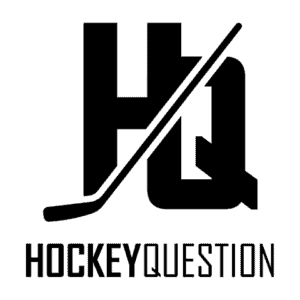Bauer and CCM are the two most popular hockey brands in the world.
These two companies have been going head to head on everything hockey:
Hockey skates, sticks, helmets, and more.
So, which brand takes the cake when it comes to hockey sticks?
Well, in this post I’ll go over the differences and similarities between Bauer and CCM sticks.
I’ll go over different aspects of the sticks like flex, grip, kick point, and more.
If you’re trying to figure out whether you should get a Bauer or CCM hockey stick, then this article is for you.
If you want to just see the best hockey sticks for beginners, check out this article.
And, just a heads up—I’m only going to cover composite hockey sticks in this article. I’ll save wood hockey sticks for another post.
Let’s begin.
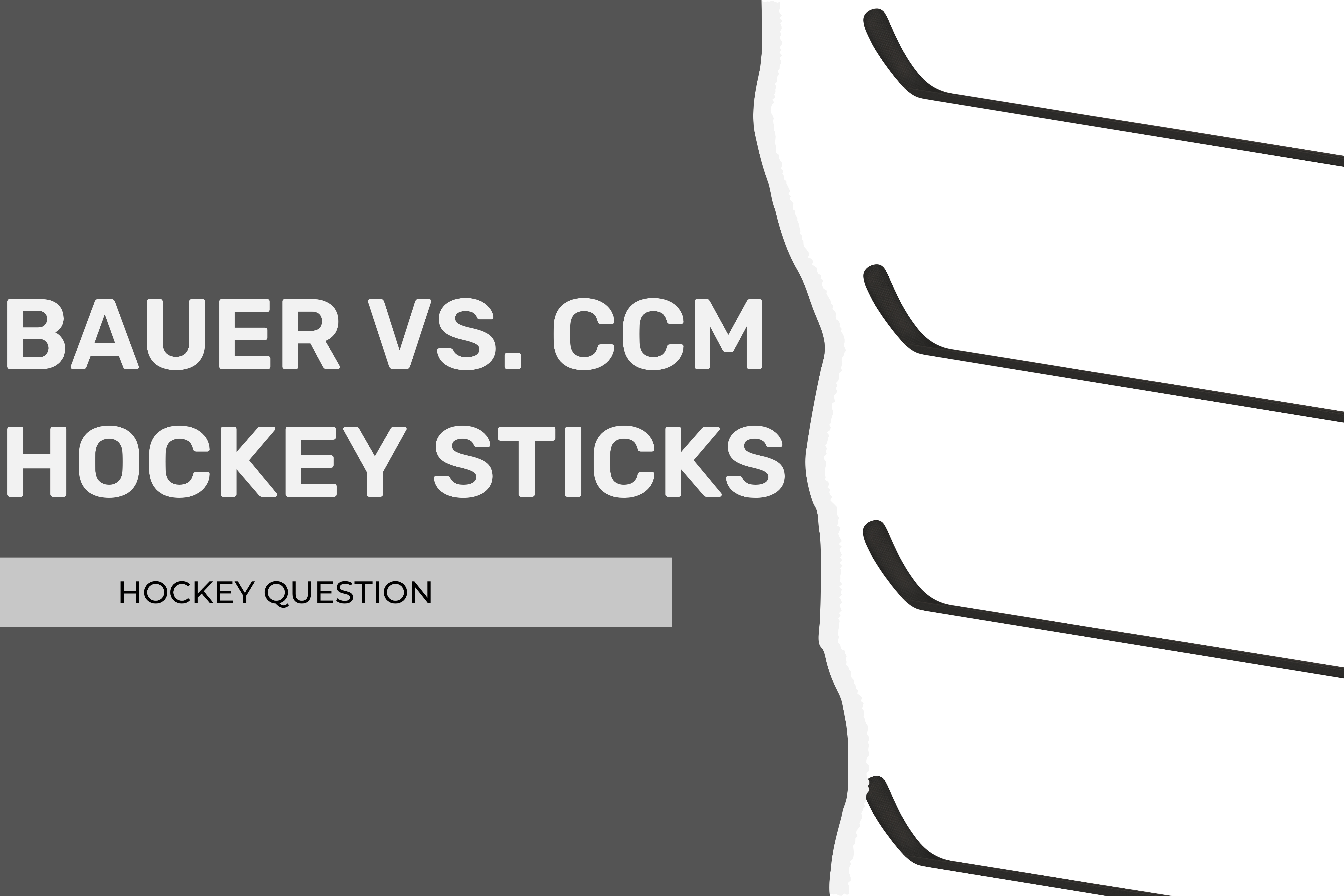
Recommended Bauer & CCM Sticks
Before we dive into the details on what truly makes Bauer and CCM sticks different and comparable, I’ll list a few of the best recommended sticks from both brands:
Best Low Kick Point Stick: CCM Ribcor Trigger 6 Pro
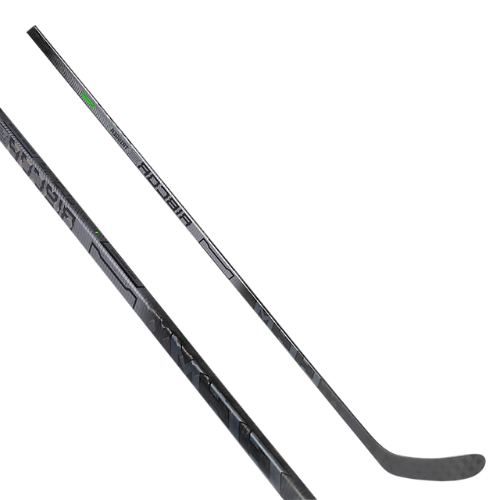
Low Kick Point Stick Runner Up: Bauer Vapor Hyperlite
The reason The Trigger 6 Pro beats out the Hyperlite is because it tends to last a lot longer than the Bauer alternative.
Best Mid Kick Point Stick: Bauer Nexus Geo
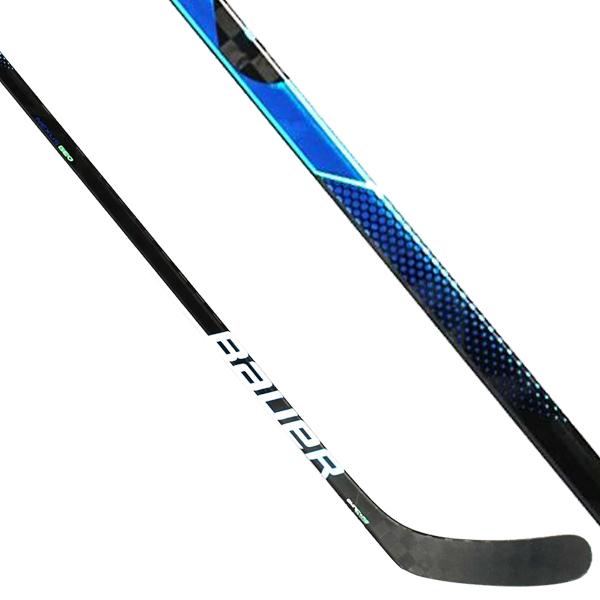
Mid Kick Point Stick Runner Up: CCM Super Tacks AS4 Pro
This one’s a very close call, but I’m going to give the edge to Bauer Nexus Geo as it has a really nice 5-sided shaft.
The Bauer Sling is also a unique option as it has the same shaft as the Nexus Geo except there’s a hole in the blade. This is a limited edition stick so it may not be available in the near future.
Best High Kick Point Stick: Bauer Supreme Ultrasonic
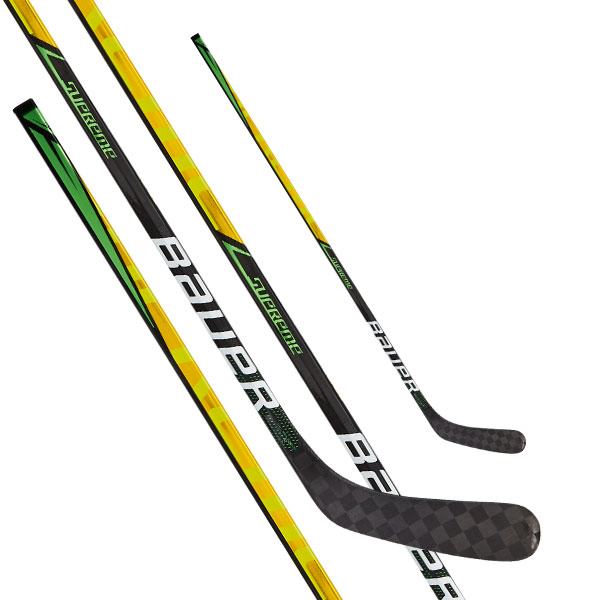
High Kick Point Stick Runner Up: CCM Super Tacks AS4 Pro
The winner for high kick point goes to the Bauer Supreme Ultrasonic. Honestly, the CCM Super Tacks AS4 Pro is an incredible stick.
The main reason Bauer gets the advantage here is simply because it offers a slightly higher kick point than the AS4 Pro. Technically, the AS4 Pro is listed as a mid kick point stick—though it’s more of a hybrid mid-high stick.
If you want the most powerful shot, then you should go with the Bauer Supreme Ultrasonic. However, if you’re wanting a slightly quicker release, then choose the CCM Super Tacks AS4 Pro.
Weight
Now, let’s dive into the details.
First up, we’ll talk about stick weight.
This category is pretty easy to understand.
The lighter the stick, the less it weighs—which is a good thing.
You don’t want to be clunking around the ice with a super heavy stick.
Heavier means slower shots, passes, poke checks, and more.
Typically, the higher-end the stick is, the lighter it will be.
Here are some Bauer and CCM stick weights. For this example, I’ll use the weight of a Senior 85/87 flex.
| Bauer | CCM |
| Bauer Vapor Hyperlite: 385g | CCM Ribcor Trigger 6 Pro: 375 grams |
| Bauer Sling: 365 grams | CCM JetSpeed FT4 Pro: 380 grams |
| Bauer Nexus Geo: 390 grams | CCM Super Tacks AS4 Pro: 374 grams |
| Bauer Supreme Ultrasonic: 390 grams | |
| Average Weight: 382.5 grams | Average Weight: 376.3 grams |
Overall, Bauer and CCM have very similar stick weights. Strictly looking at average stick weight, CCM just edges out Bauer with 376.3 gram average stick weight. But, this is a difference of about 6 grams. A difference this small will hardly be noticeable.
However, when you’re looking at the lightest stick available, Bauer edges out CCM with the Bauer Sling at 365 grams. CCM’s lightest offering is the CCM Super Tacks AS4 at 374 grams, with a difference of 9 grams.
Kick Point
Next up, we’ll take a look at kick points.
A hockey stick’s kick point is the point on the stick where it flexes the most.
The higher the kick point on the stick is, the more powerful the shot will be.
The lower the kick point on the stick is, the quicker the shot release will be.
The most popular kick points are low to medium kick points. This is because most hockey players are taking wrist shots over slap shots. There are also hybrid sticks that offer mid-low kick points.
And, of course there are hockey sticks that come with a high kick point but this is more rare.
Low Kick Point Stick Lines:
Bauer Vapor (top model is Hyperlite)
CCM Ribcor (top model is the Trigger 6 Pro)
Mid Kick Point Stick Lines:
Bauer Nexus (top models are the Sling and Geo)
CCM JetSpeed (top model is the FT4 Pro)
CCM Super Tacks (top model is the AS4 Pro)
Just a heads up—the CCM Super Tacks hockey stick has a slightly higher kick point than typical mid kick point sticks. You could probably classify it as a mid-high kick point hockey stick.
High Kick Point Stick Lines:
Bauer Supreme (top models are the ADV and Ultrasonic)
Blade Curve
Hockey blade curves are one of the hottest topics among hockey players.
You can tell a lot about a player by their blade.
Between Bauer and CCM, there are a ton of blade curves to choose from. I’ll just talk about the most popular ones.
Some curves are designed to be great at lifting the puck, while others are great for backhands. Some are made for slap shots. Others for dangling around defenders. And, some are crafted to offer all around performance on the ice.
The most common toe curves are P92, P28, and P90. The most common mid curve is P88.
When picking out a stick, you might see the letter “M” after the curve name (like P90M). This just means that the blade is a bit taller. A taller blade can help make your shots harder and give you an overall stronger blade. Plus, it can help make faceoffs easier to win.
Keep in mind that different brands have their own names for common curves (which are almost always pretty close sounding to other brands). For instance, you’ll notice Bauer has a “P92” curve while CCM has the same curve named “P29”
Most popular curves:
- Great all around curve (great for everything): P92 (Bauer), P29 (CCM)
- Great curve for raising the puck high: P28 (Bauer), P28 (CCM)
- Great for wrist shots and stick handling: P88 (Bauer), P88 (CCM)
- Great all around plus raising the puck hybrid: P92M (Bauer), P90TM (CCM)
If you’re just learning how to play hockey, I’d recommend starting with a P92 curve (or P92 equivalent).
Flex
The flex of your hockey stick is how much it bends when you put weight on it.
It’s measured in how much weight (in pounds) it takes to flex your stick one inch.
The flex of a stick is marked as a number (i.e. 85) followed by “Flex” and it typically comes in increments of 5. Unless you’re Bauer. Then they’ll usually end in a “7” or “2”
Most senior sticks have a range of flex from 65 to 95.
Some young kids will use a flex as low as 10. And, some senior sticks will go up as high as 105 or more. For instance, Zdeno Chara uses a 130 flex.
I’d recommend you start with a flex that is about half your weight.
So, if you’re 180 pounds, try to use a flex around 90.
However, if you’re brand new to hockey, it’s usually good to go a little bit lower as you work to build up your shooting muscles. In this case, if you’re 180, instead of going with 90 flex, go with an 85 or even 80. That is, unless you’re very strong…
At the end of the day, these are really just starting points. The stick flex that’s best for you all comes down to personal preference. For instance, Phil Kessel weighs 223 pounds. According to our calculation, he should use a flex of about 110.
However, Phil uses a 65 flex! And, it’s working out pretty well. He’s got 6 30-goal seasons and back-to-back-cups with Pittsburgh in 2016 and 2017.
Grip
Next up on our list is the stick grip. It’s exactly what it sounds like.
Some hockey players love having extra grip on their stick while others hate it.
There are 3 types of stick finishes:
1. Gloss — the most grippy
2. Matte — not as grippy as gloss
3. No Grip — no grip —but a smooth finish
Some sticks even come with a textured grip like the CCM AS4 Pro Stick
For more hockey gear tips, check out our other popular blog posts: How to Tell If Your Hockey Stick Is Broken, How to Remove Hockey Jersey Wrinkles, and the 4 Best Base Layers for Hockey Players.
Sources
